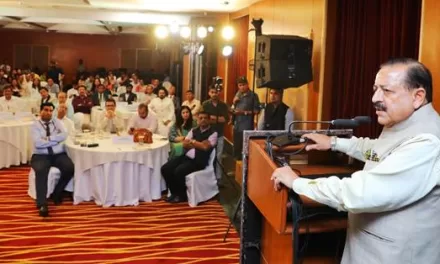In a world increasingly plagued by misinformation, researchers are pioneering innovative strategies to combat the spread of falsehoods. At the forefront of this movement is Sander van der Linden, head of the Social Decision-Making Lab at the University of Cambridge. Van der Linden’s work aims to “inoculate” individuals against the persuasive power of misinformation, drawing an intriguing parallel to how vaccines protect against disease.
Growing up in the Netherlands in the 1990s, Van der Linden witnessed the devastating effects of racist ideologies and antisemitic conspiracy theories. These experiences fueled his curiosity about propaganda and how it shapes beliefs. His career has since focused on understanding the mechanisms behind misinformation and developing methods to counteract it.
The inoculation strategy, also known as “prebunking,” follows a simple two-step formula: first, individuals are warned about the potential for manipulation, and second, they are exposed to a weakened version of the misinformation. This exposure is designed to stimulate critical thinking without persuading the audience. As Van der Linden and his colleague Jon Roozenbeek explain in a recent JAMA publication, the goal is to raise skepticism (the “antibodies”) without convincing individuals of the misinformation (the “infection”).
Van der Linden’s approach has garnered significant attention, particularly following the release of his 2023 book, Foolproof: Why Misinformation Infects Our Minds and How to Build Immunity. With support from Google’s Jigsaw, the inoculation method has reached millions through YouTube advertisements. Many researchers, including psychologist Jay van Bavel from New York University, believe this approach may be one of the most effective in combating misinformation.
However, not everyone agrees with this method. Critics argue that focusing on inoculating individuals detracts attention from the systemic issues of misinformation, such as the role of social media platforms that facilitate its spread. Sandra González-Bailón, a social scientist at the University of Pennsylvania, suggests that while individual interventions like inoculation are easier to implement, they may oversimplify a complex problem. “It puts all the pressure on the individual,” she cautions.
The concept of inoculation has historical roots dating back to the Cold War. In 1954, following the Korean War, U.S. experts proposed that to resist manipulation, individuals should be educated about American ideals. Psychologist William McGuire took this further, suggesting that exposing individuals to weakened forms of counterarguments could bolster their defenses against misinformation. Van der Linden adopted and expanded upon this idea, demonstrating its effectiveness in various studies, including those focused on climate change.
In one significant study published in Global Challenges, Van der Linden found that when participants were warned about misinformation related to climate change before being exposed to false claims, their ability to recognize the truth increased significantly. This “preemptive warning” effectively countered the misinformation, even among skeptics.
Building on this foundational work, Van der Linden and Roozenbeek have developed interactive games like Bad News, which educate users about misinformation techniques, and Harmony Square, which illustrates how propaganda can create division. These games have proven popular in educational settings, reaching millions worldwide.
Recently, researchers have expanded their efforts to include animated videos that illustrate misinformation tactics. Testing showed these videos effectively helped viewers recognize misleading content. However, concerns remain regarding the potential for such general inoculation strategies to inadvertently foster distrust in reliable information.
Critics like Cornell University psychologist Gordon Pennycook warn that general inoculation approaches may backfire, leading to increased skepticism toward credible news. He argues that emotional language is often present in both reliable and unreliable information, complicating the challenge of discernment. Instead, Pennycook advocates for “accuracy nudges,” simple prompts encouraging individuals to consider the reliability of the content they encounter.
The ongoing debate about the most effective means of combatting misinformation highlights a broader concern: shifting the burden of responsibility onto individuals rather than addressing systemic issues within social media platforms. As misinformation proliferates, especially leading up to critical events like elections, experts stress the need for comprehensive strategies that encompass both individual and structural solutions.
Van der Linden acknowledges this duality in his work. While he emphasizes individual strategies, he is also aware that broader, structural interventions are necessary to tackle the root causes of misinformation. As researchers continue to explore innovative solutions, the battle against misinformation remains a pressing challenge in our increasingly interconnected world.











